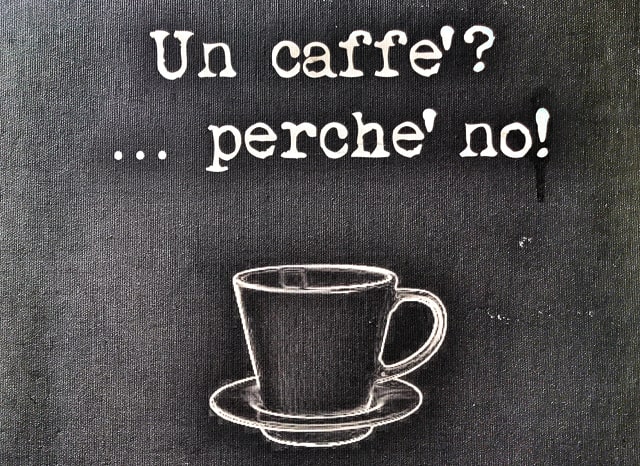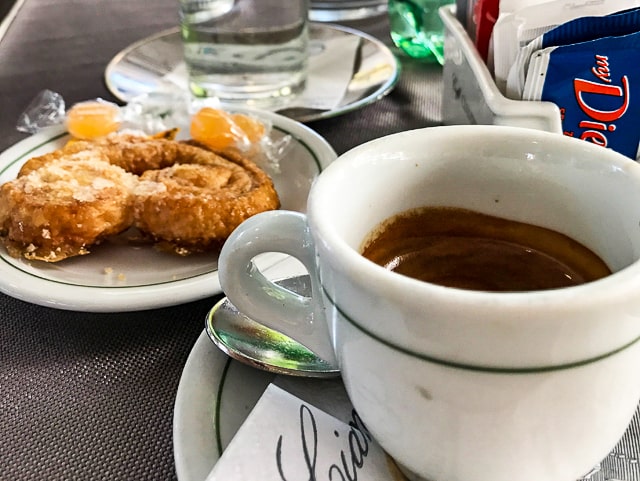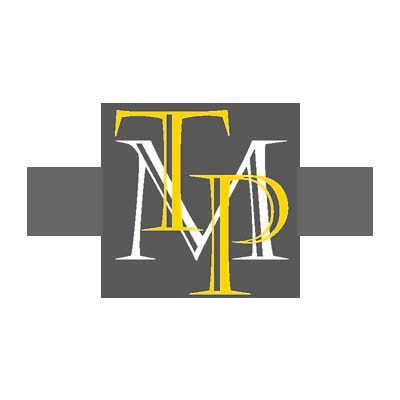Why is Italian Coffee the Best?
It’s not your Mother’s Maxwell House.
My mother was addicted to coffee. She would brew a large pot of Maxwell House Coffee every morning, drink two cups with her breakfast, and enjoy the rest of the pot throughout the day. I, on the other hand, didn’t start drinking the brown liquid until I was in my 40s, years after my first visit to Italy.
We took Mom with us to Italy that first time in celebration of her 75th birthday. Exhausted from the overnight flight, we headed to a bar so Mom could have a cup of coffee. She looked at the small cup the waiter delivered, took one sip, and almost spit it out on me. The next morning, she ordered coffee with breakfast, and when another small cup arrived, she refused to even try it. “I’ll have some tea,” she announced, and for the remaining eight days of our trip, she refused to drink anything but water or tea.
At that time, none of us understood that coffee in Italy is different. More than a drink, it is a culture. If you’re heading to Italy, here are a couple of tips and coffee drinks to help you understand the Italian coffee ritual.
The Basics
Unless you go to Milan or Turin, you are not going to find Starbucks in Italy, so head to one of the many bars you’ll see dotting the cities and towns you visit. Coffee shops are called bars in Italy, and while you can buy alcohol in them, they serve coffee most of the day. Many of the bars are small, so Italians typically enjoy coffee al banco (at the counter). You may pay extra to sit at a table in many larger cities (aka tourist zones).
Order caffé, (aka coffee) in Italy, and you will get an espresso. Brewed coffee doesn’t exist there. If you want something close to American coffee, you need to order a caffé americano—espresso and a pot of hot water so you can make the coffee as you like it. As a side note, Italians call American coffee, acqua sporca (dirty water).
Order a latte in Italy, which I mistakenly did on my second trip there, and the barista will give you a glass of milk. While many American coffee bars call a cup of espresso and steamed milk a latte, latte is the Italian word for milk. A caffé latte is steamed milk (no foam) and espresso, comes in a mug or a bowl, and is usually made at home and not in Italian bars.
Order a non-fat, no whip, pumpkin-spice latte in an Italian bar, and you’re going to get a strange look. Coffee in Italy is sacred and simple. Most Italians do not even add milk or sugar to it. I’ve never seen flavored coffee, although there are regional specialties that may include cocoa, hazelnut, or liquor.
So, what should you order?
Cappuccino
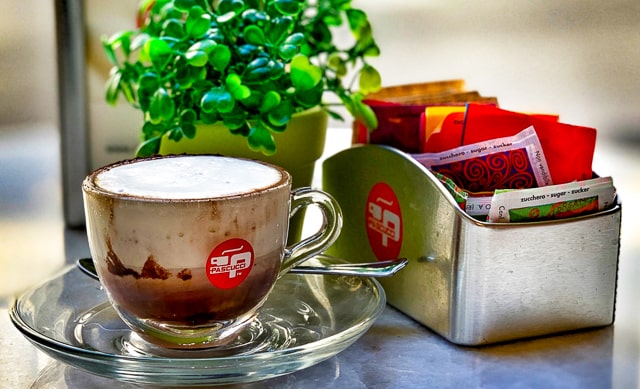
A cappuccino consists of equal parts of espresso, steamed milk, and foam, while a macchiato is a shot of espresso topped with a bit of foamed milk. Some baristas sprinkle cocoa on top of the beverages, but you’re not likely to find a swan or bear drawn in the hot foam. Typically, Italians take these milky drinks with a cookie or pastry before 11:00 am and never after a meal. The thought is that hot milk is not good for digestion, so they avoid it after lunchtime.
Marocchino

Originating in northern Italy, caffé marocchino is becoming more popular throughout the country. Served in a clear cup or glass, a marocchino consists of layers of espresso, ground cocoa, and milk foam. Some baristas will coat the cup with ground cocoa before filling it. In Alba, the home of Ferrero, they use Nutella.
Bicerin

If the amount of cocoa in a marocchino is not enough for you, you might enjoy a Bicerin, but you need to be in the Torino (Turin) area to order one as it is not popular throughout the rest of Italy. Originating in 1764 at Torino’s Caffè Confetteria Al Bicerin, the beverage is a mix of espresso, dark drinking chocolate, and chilled and whipped heavy cream. Instead of being mixed, the three ingredients are layered in a bicerin (small clear glass) from which the drink gets its name.
Caffé Corretto
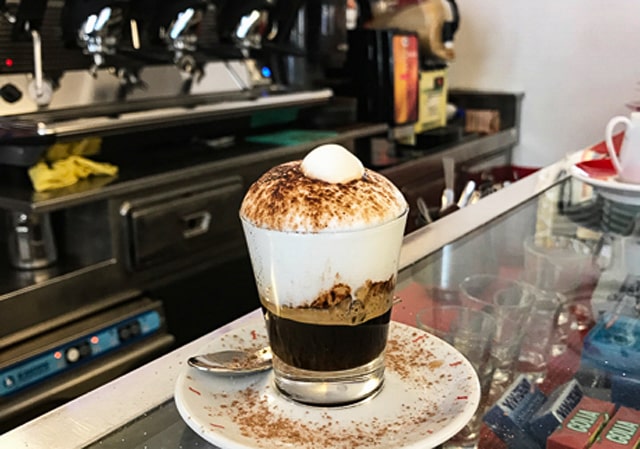
Caffé coretto is, quite simply, espresso spiked with alcohol. The beverage, which translates to “corrected coffee,” is normally an after-dinner (or lunch) drink and serves as a digestive. Depending on the bar, the barista will either mix a shot of liquor with a shot of espresso in a glass or serve a shot of espresso with a side of alcohol. While grappa and sambuca are popular liquor choices, Centerba, Strega, brandy, and cognac are popular additives, too.
My favorite caffé coretto is espresso mixed with a shot of Bailey’s and topped with hot foam and cocoa powder. My friend Cesare, owner and barista at Bar Santo Stefano in Bologna, makes it for me often while I’m there. We jokingly call it Caffé Cri.
Caffè d’orzo
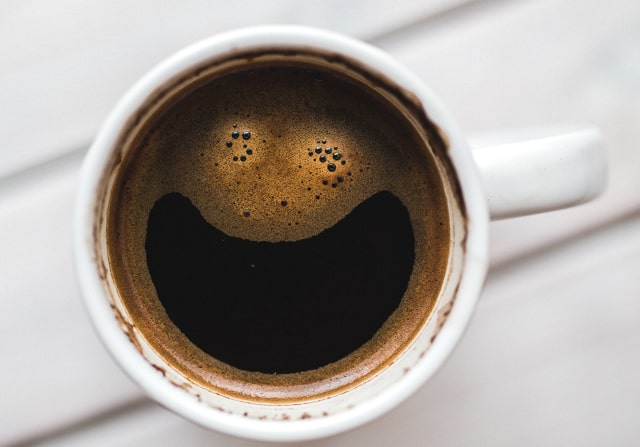
Orzo became popular in Italy in the years before World War II when Musolini’s tariffs on coffee made it too expensive for ordinary citizens. Made from roasted, ground barley, orzo resembles coffee in looks but has a nutty, slightly bitter taste. To hide the bitterness and “correct” the taste, Italians started adding liquor to orzo espresso (Yes, that’s how caffé corretto got its name.) Because it is caffeine-free and can be the base of any coffee drink, orzo remains an acceptable coffee substitute today.
The Bottom Line
Caffé is an essential part of Italian life, so drink in the culture. Forget takeaway because coffee-on-the-go is just not popular. Stand at the bar and enjoy the experience just like the natives.

About Christine Cutler—Christine is a writer, photographer, editor, guide, teacher, traveler, Ohio native, Florida resident, and world citizen. She lives in Downtown St. Petersburg with her husband and crazy Welsh Terrier. Cutler can’t sit still very long. In addition to maintaining her own websites Cold Pasta and Red Wine and Christine Cutler, she is executive editor of Food, Wine, Travel Magazine. Christine is a travel, non-fiction, and memoir writer; a photographer; and editor whose work has appeared in numerous publications. A dual Italian-American citizen, she spends as much time as she can exploring Italy.

